from 0 review
9 Days 8 Nights
Daily Tour
Unlimited
Any Preferred Language
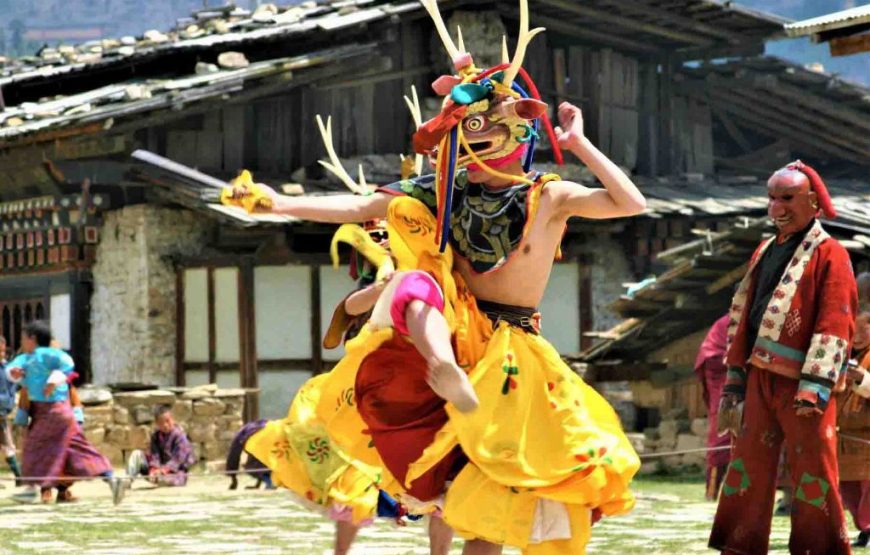

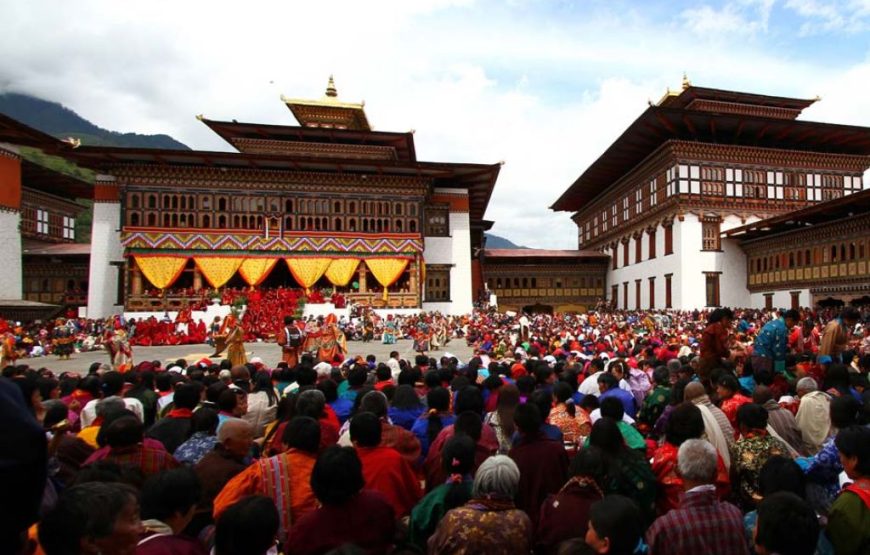
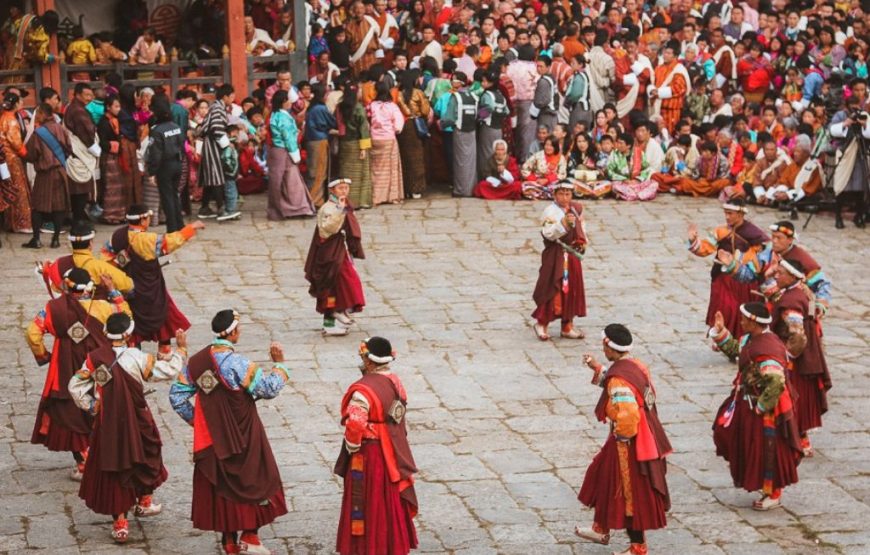
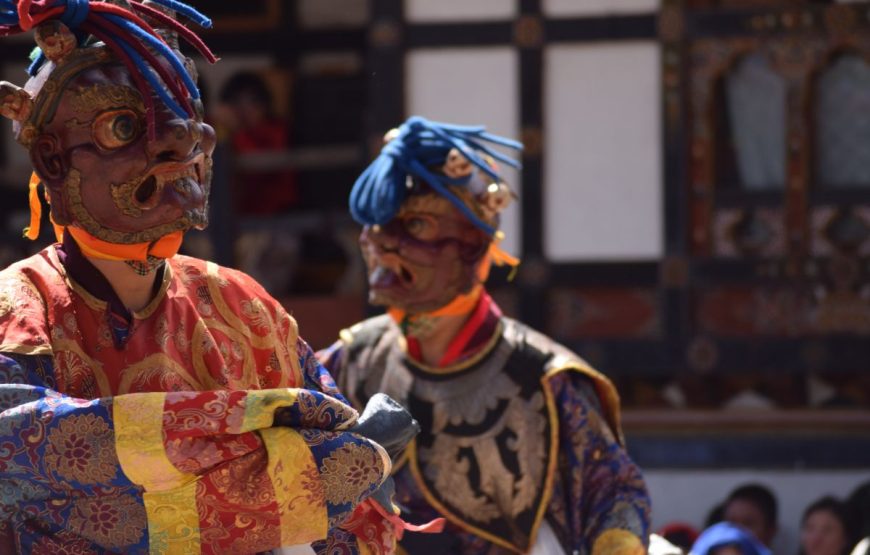
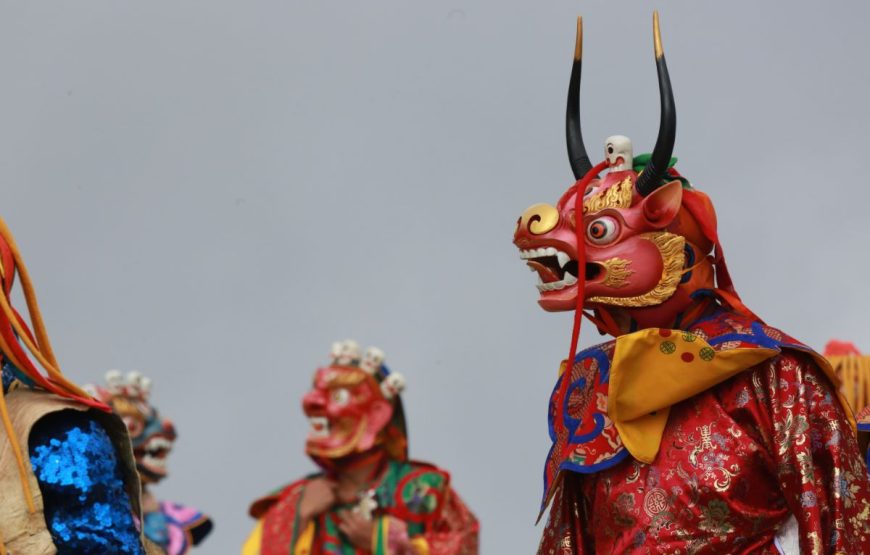
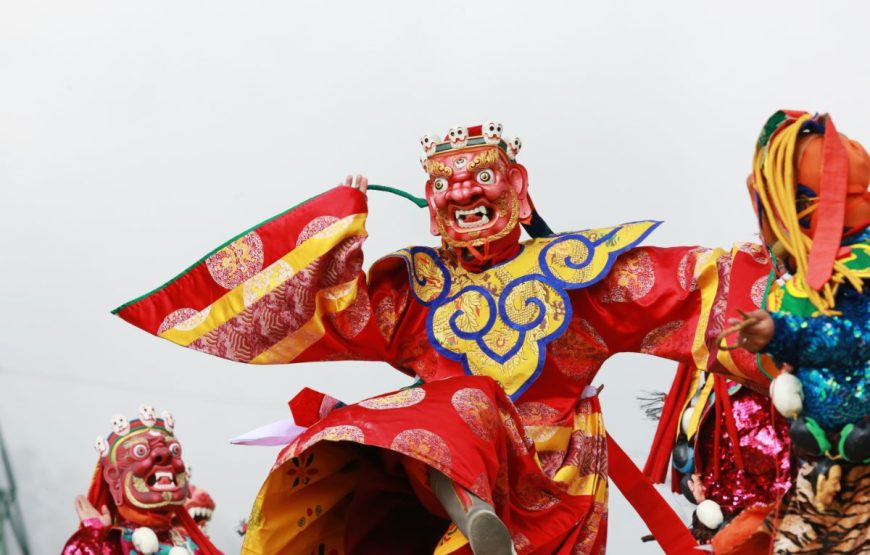
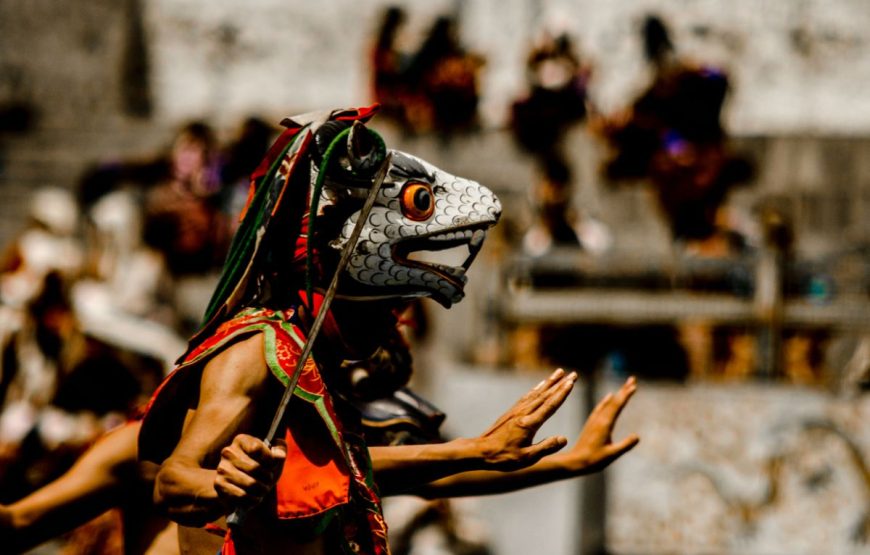
Punakha festival consists of typical masked dances which are very colourful and interesting, the events and enactments are different on each day. Punakha Dromchoe is a five day long festival dedicated to the goddess Mahakala. The religious aspects are performed in the same manner as in early times. On the last day, a play of warriors going off to war is enacted.
Arrive at Paro.You will be received by your tour guide at the Paro International Airport.
After the refreshment,visit the Ta Dzong rated as one of the finest natural Museum in South Asia, and is filled with antique thanka paintings, textiles, weapons and Armour. The visit the Rinpung Dzong ( in the same location) built in 1645 to defend the valley against Tibetan invaders. The Dzong is now use as an administration center and school for monks. Then walk down to Rimpung Dzong Bridge, one of the oldest bridges in Bhutan.
In the evening,travel to Thimphu, the capital of Bhutan. Dinner and overnight at hotel in Thimphu.
In the morning,visit :
National Library where a vast collection of ancient manuscripts is preserved.
School of Traditional Painting of Arts and Crafts where children are taught the traditional art of woodcraft and painting.
Folk Heritage Museum, which is loated in the same area, and further down to the Textile Museum.
National Institute of Traditional Medicine
National Textile museum
After lunch, visit:
Tashichhodzong, “the fortress of the glorious religion”. This is the center of government and religion, site of the monarch’s throne room and seat of the Je Khenpo or Chief Abbot. Built in 1641 by the political and religious unifier of Bhutan, Shabdrung Ngawang Namgyal, it was reconstructed in the 1960s in traditional Bhutanese manner, without nails or architectural plans.
National Memorial Chorten, continuously circumambulated by the faithful, murmuring mantras and spinning their prayer wheels. Construction of this landmark was the idea of Bhutan’s third king, His Majesty Jigme Dorji Wangchuck (“the father of modern Bhutan”) who had wished to erect a monument to world peace and prosperity. Completed in 1974 after his untimely death, it serves both as a memorial to the Late King and as a monument to peace.
The government-run Handicrafts Emporium and local crafts shops, to browse through examples of Bhutan’s fine traditional arts. Here you can buy hand-woven textiles, thangkha paintings, masks, ceramics, slate and wood carvings, jewelry, and other interesting items made from local materials.
Overnight at the hotel in Thimphu.
Driving about 2 1/2 hours, leaving Thimphu the road climbs steeply through a forest of pine and cedar, festooned with hanging lichen high up near Dochula pass (3,050 m). This pass offers panoramic views of the Himalayan mountain ranges on a clear day. You will see Rhododendrons, Magnolias, Junipers and pine forests with chirping sounds of the many rare species of birds found in Bhutan. We then drive onto Lobesa where you take a short hike to Chimi Lhakhang Temple. This temple is on a hill top and it is dedicated to the great Yogi known as Drukpa Kuenley or popularly known as “Divine madman” of the 14th century. It is believed that this temple blesses women who seek fertility. Overnight at hotel
Attend Punakha Festival. Venue- which is held at the courtyard of the Punakha Dzong.Overnight at hotel at Punakha.
Morning hike to Khamsum Yulay Namgyel. A temple built by the queen mother of Bhutan for peace and harmony best exemplifies the representation of Bhutans unique arts, crafts & architecture. This afternoon enjoy the festival of Punakha Domchoe. Overnight at hotel
Morning visit Wangdue Dzong and drive back to Thimphu, visiting Simtokha Dzong en route. This dzong, built in 1627, is the oldest in Bhutan. It now houses the Institute for Language and Culture Studies
In the evening,drive to see the Takin Zoo, which houses the national animal the Takin that is only found in Bhutan. Drive further upto Sangaygang to get a bird’s eye view of the Thimphu valley in the evening. Dinner and overnight at hotel in Thimphu.
After breakfast, drive to Paro. Visit Kichu temple,one of the 108 temples built in the 7th century by the Tibetan King Songsten Gampo. The story goes that a giant demon lay across the whole area of Tibet and the Himalayas and was preventing the spread of Buddhism. To overcome her, King Songtsen Gampo decided to build 108 temples, which would be placed on all the points of her body. Of these 108 temples, 12 were built in accordance with precise plans. Thus, it happened that in about the year AD 638 the temple of Jokhang in Lhasa was built over the very heart of the demoness.
After lunch, drive up the valley to view the ruins of Drukgyel Dzong, 18 km. from Paro town on the north side of the valley. It was from here that the Bhutanese repelled several invading Tibetan armies during the 17th century. Evening at leisure to visit local shops. Overnight at the hotel in Paro.
After breakfast,drive up to the base camp of Taktsang and then hike up to the most famous Monastery in the entire kingdom of Bhutan perched on the edge of a steep cliff, about 900 meters above Paro Valley. The hike to the viewpoint will take about an hour and it will take 2 hours to the monastery. Lunch at the viewpoint. Overnight at hotel in Paro.
In the morning, your tour guide will seee you off at the Paro Airport for your onward journey.
End of Tour Program
Bhutan is a year-round destination. There are four seasons: summer (June to August), autumn (September to November), winter (December to February) and spring (March to May). But because of the range of altitudes in the country, and the influence of the north Indian monsoons, the climate is incredibly varied.
In the south, the humid, subtropical climate is fairly consistent year-round, with temperatures between 15oC and 30oC. Central Bhutan, with its temperate forests, has a more seasonal climate, with warm summers and cool, dry winters. The northern regions are much colder during winter. Because of the high altitude, mountain peaks are snowy year-round and the lower reaches remain cool in summer.
In summer, the Indian monsoon season runs from late June or July to late September, mostly affecting the southern regions. Most farming activities take place in the summer, when crops thrive in verdant landscapes.
Autumn, from late September or early October to late November, follows the rainy season. It is characterised by bright, sunny days and some early snowfall at higher elevations. It’s the season of feasts and festivals as farmers reap the fruits of their work.
From late November until March, the crisp, clear and sunny winter sets in, with frost throughout much of the country and snowfall common above elevations of 3,000 metres. The winter northeast monsoon brings gale-force winds at the highest altitudes through high mountain passes, giving Bhutan the name Drukyul, which means Land of the Thunder Dragon in Dzongkha (Bhutan’s national language).
Bhutan’s generally dry spring starts in early March and lasts until mid-April. It is a botanist’s delight, with nature in full bloom. Summer weather commences in mid-April with occasional showers and continues to late June.
If you would like to book completely independently, there are plenty of online resources for inspiration, research and booking – including this website. There are lots of experienced, accredited tour operators that can help you too. Please check our website https://services.bhutan.travel/ for a full list of DOT-certified Tour Operators, hotels and guides.
Our host team is also on hand to help provide you with information as you plan your journey.
The country has one international airport located in Paro. Flights operated by Drukair and Bhutan Airlines arrive and depart from destinations including Bangkok, Delhi, Kolkata, Bagdogra, Bodhgaya, Dhaka, Kathmandu, Guwahati and Singapore. Private jets or charters can fly into Bhutan after obtaining the relevant approvals.
There are also domestic airports in Yonphula in eastern Bhutan, Bumthang in central Bhutan, and Gelephu in south-central Bhutan.
There are no rules about what visitors should wear. However if you are planning to visit places of religious significance, respectful smart-casual clothing that covers your body from shoulders to knees is appropriate and appreciated.